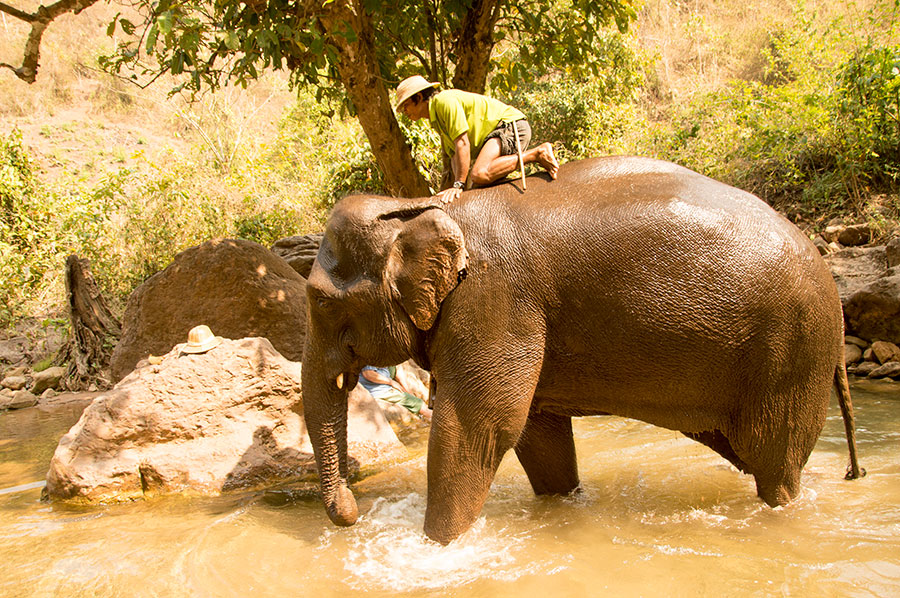An elephant’s life in Myanmar, otherwise known as Burma, can be a treacherous and hard life. Estimates say that elephants in Burma can be worked moving between 800 and 1000 tons of weight per year. These elephants are often controlled and hence trained using sharp hooks that puncture the thinner skin between the ears and lower jaw. Between the years 2000 and 2011, a tremendous amount of wood was extracted in Burma, much of it using elephants. As a result, less than 30% of these great forests remain.

The government set a goal of keeping the forests at 30% but still allows legal logging in order to transition that industry. Even though they say they have stopped illegal logging, most of it flowing into China, the problem still persists in some areas along the borders of the Shan and Kachin states. As people transition to other types of work, elephants will also be “out of work” and will need a place to live. There are proposals being reviewed to create a sanctuary for the majestic animals.
So what to do? How to save the elephants and the forests at the same time? At an elephant camp near Kalaw in the Shan State of Burma, the staff will show you how they are leading the way. Green Hill Valley (GHVelephant.com) Elephant Camp Founder Htun Htun and his wife began in 2011 and within four years have built one of the best retiree camps for elephants. They currently have six elephants, two that they own and four that are leased from the government. They have also planted over 12,000 trees, many of them teak. Every guest gets the chance to plant a seedling or start a tree from seeds.

Elephant care is in their blood. Htun Htun’s uncle worked for more than 30 years as a veterinarian and wanted to give back to the elephants. He says, “The elephants are released each day at 3:30 in the afternoon to roam freely in the forests. The mahouts then go out each morning beginning around 6:00am to bring the elephants (the oldest at 66 years) back into the mahouts’ village.” There are a total of about 200 acres they can roam but our guide Ko Saw said with a smile, “Sometimes they go further into the banana fields neighboring the land looking for a good snack.”
After hand feeding the elephants pumpkins and cut banana tree stalks, we learned about the differences between the Asian Elephants and their African relatives. I learned to say, “Ha” lifting the food to get the elephant to open their mouth. We moved down to the river to a natural pool to wait for “Our Lady.” At 66 years old, Swe Moe May moved gracefully, took a minute to find a spot to kneel down for her bath, and then the bathing commenced. I bathed the lady, scrubbing her rough back and sides with Acacia plant, a spongy material used as a natural cleaner. I carefully climbed on her back and made my way up behind her ears while I massaged her head. What a way to connect with these gentle giants. If you are in the Kalaw area, don’t miss the chance to visit this great example of eco-tourism and ethical travel.
Read Ethical Traveler's Reprint Policy.
